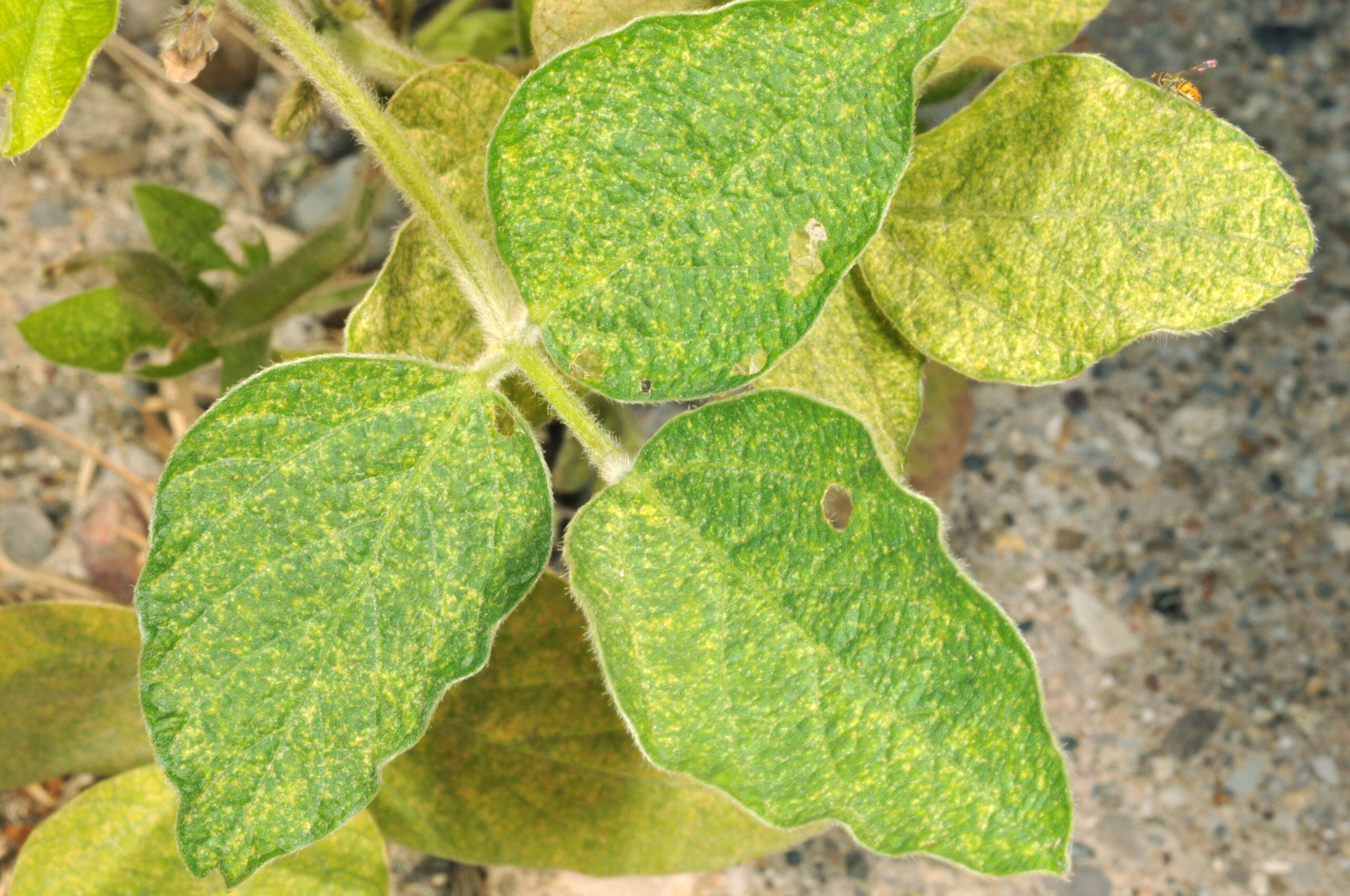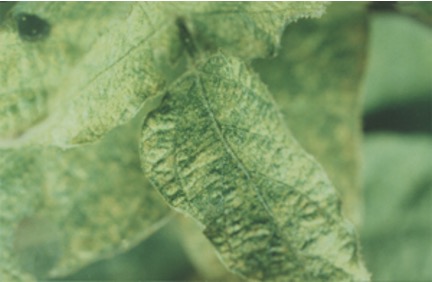Two-spotted Spider Mites (Soybean)
Tetranychus urticae Koch
Search the Pest & Crop Newsletter

The ability to see these full-sized life-cycle images is currently disabled to resolve an issue.
Related Video Resources:

Photo by J. Obermeyer
Appearance and Life History
The two-spotted spider mite (TSM) is one of many phytophagous, or plant-feeding, species of mites. Common hosts are clover, chickweed, and various grasses. TSM population outbreaks may increase significantly if high temperatures are associated with dry conditions.
Egg – The spherical, shiny, straw-colored eggs are very small and generally not visible without magnification. Webbing produced by the TSM, which helps fasten the eggs to the leaf surface, makes the eggs difficult to see. After an incubation period of 3 [(75°F or 24°C) to 19 (50°F or 10°C)] days the eggs hatch.
Larva – The six-legged, colorless, larva resembles the body form of the nymph and adult. It is slightly larger than a TSM egg. During the larval stage, little food is consumed.
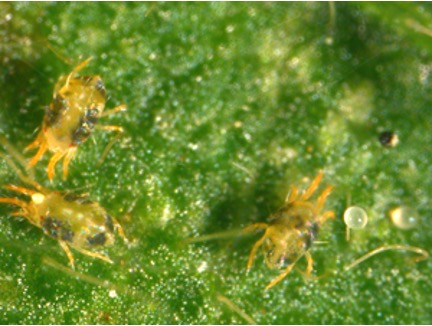
Photo by J. Obermeyer
Nymph – The eight-legged nymph looks like an adult, but is smaller and not sexually mature. It goes through two stages, proto-nymph and deuto-nymph, before becoming an adult.
Adult – Adults have eight legs. The female is about 1/60 inch (0.4 mm) long and the male is only about 1/80 inch (0.3 mm) long. Their color varies from pale yellow through green to orange to brown. When viewed from above, they appear to have 2 dorsal pigmented spots, which are actually contents of the gut showing through the body wall. A female TSM will lay from 50 to 100 eggs during her lifetime. Unfertilized eggs develop into males, fertilized eggs into females. The sex ratio can vary considerably, but usually favors the females.
The adult TSM overwinters in non-crop and weedy areas such as grassy waterways, roadsides, set-aside acres, and/or pastures. As temperatures warm in the spring, TSM begins feeding on common hosts. Mating and egg laying soon follow and continue throughout the mite’s life. Under optimum conditions of high temperatures and low humidity, this mite can complete its development in 5 to 7 days. Under more normal temperatures and humidity, the generation interval is approximately 19 days.
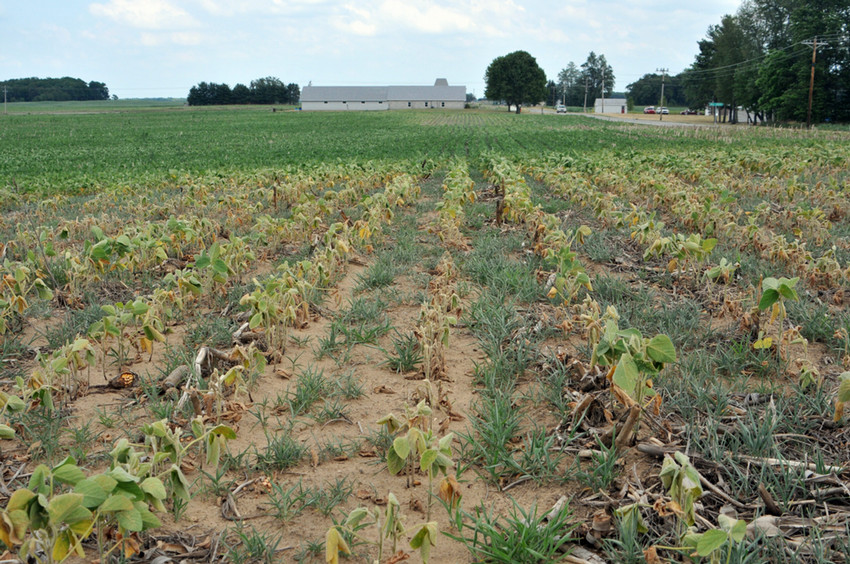
Photo by J. Obermeyer
Damage
TSM feeds by piercing leaf cell walls with its mouthparts and sucking out the cell’s contents. These cells become irreversibly non-functional, no longer contributing to plant growth and development. However, plants may be able to produce new leaf growth if plant development conditions improve.
Damage to soybean is usually first observed near field borders or grassy areas within fields. As the vegetation in non-crop areas matures, is mowed, or succumbs to drought conditions, the mites disperse to surrounding crops.
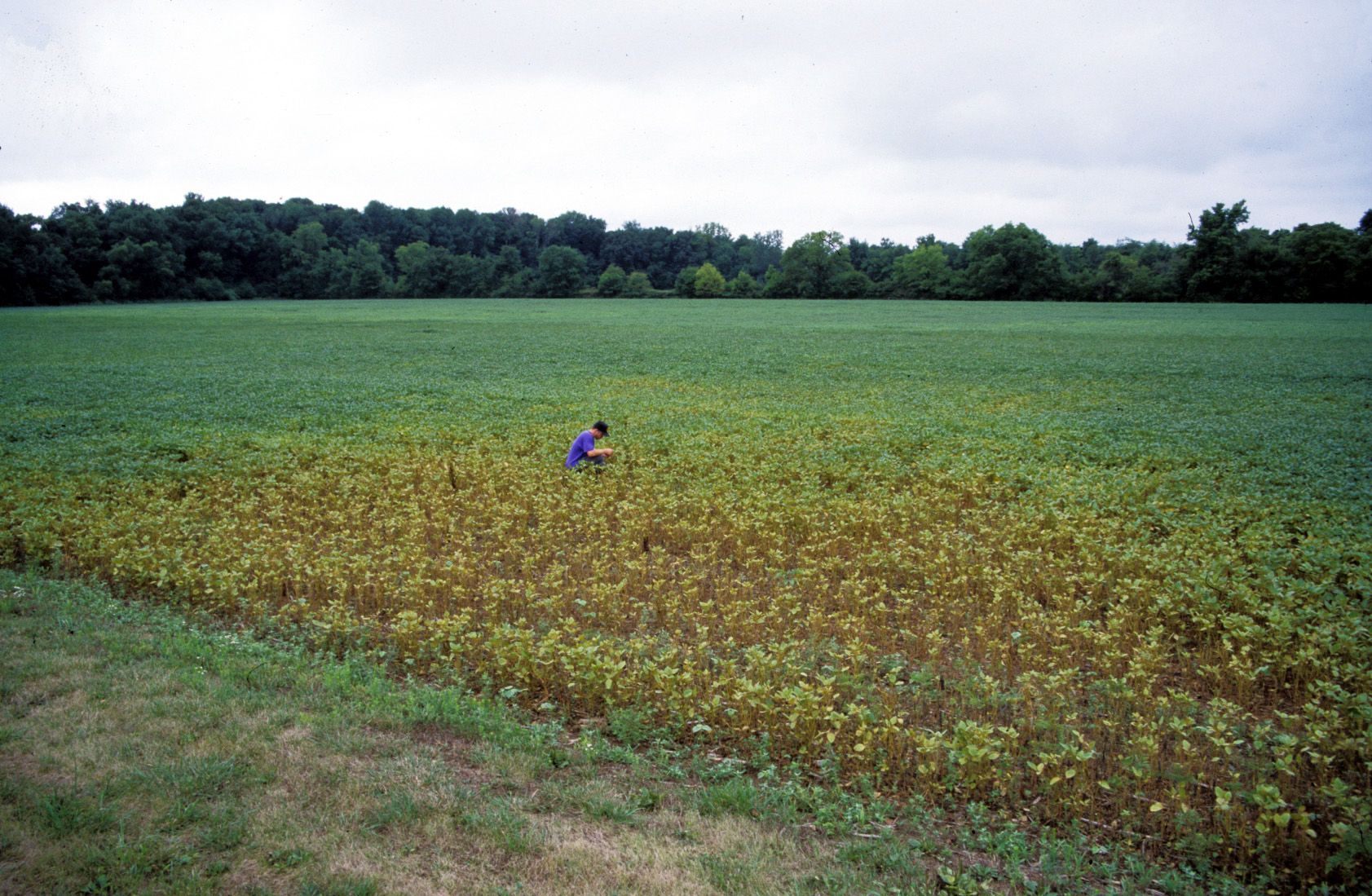
Photo by J. Obermeyer
A yellow discoloration of soybean plants in a gradual widening area (“V” or “U” pattern) near field edges or in grassy areas within a field may indicate that TSM is present and becoming established within a field. The yellow discoloration, which when examined more closely reveals a mottling or “sand blasted” appearance, will eventually take on a bronze then brown color. If left unchecked, the plants will soon become stunted. These stunted plants may produce small pods or no pods at all with plant death a possibility.
Sampling Method
- If hot, dry conditions persist for several weeks, watch for leaf discoloration (yellowing), especially along the field borders or near grassy areas within fields. Carefully inspect these areas for the presence of TSM.
- Shake some discolored leaves over a white piece of paper. Watch for small dark specks moving on the paper surface and look for minute webbing on the underside of the discolored leaves.
- Once TSM has been positively identified in areas of the field showing damage, scout the whole field to determine the range of the infestation.
- Sample in at least 5 different areas of the field to determine whether TSM is present. Use the white paper TSM detection method as described above. Note if any plant discoloration is present and if so, the level of severity.
- Repeat this procedure in other areas showing damage.
Management Guidelines
Soybean Insect Control Recommendations: E-series 77-W (PDF)
- Many factors must be taken into consideration before a TSM control measure is applied. Since limited economic threshold information is available, a good understanding of the TSM, host plant, and climatic conditions in addition to a thorough scouting program will help considerably when making management decisions. Reduction of crop yield is directly related to duration and intensity of TSM attack, with the most severe damage caused by infestations beginning in early plant growth stages and building throughout the season. However, a heavy infestation at seed set can cause seed abortion or poor seed fill.
- If leaf discoloration is apparent, TSM is positively identified, and hot, dry conditions are expected to persist, it is recommended that a control be considered. There are not many options for mite management, although spot treatments may be effective if infestations are caught early and TSM have not yet moved throughout the field. Success of spot treatments depends on spraying beyond [i.e., 100 to 200 feet (30.5 to 61 m)] the infested area, not just the damaged area. If sampling results indicate that movement has occurred in several areas of a field, or throughout the field, then treatment of the whole field should be considered.

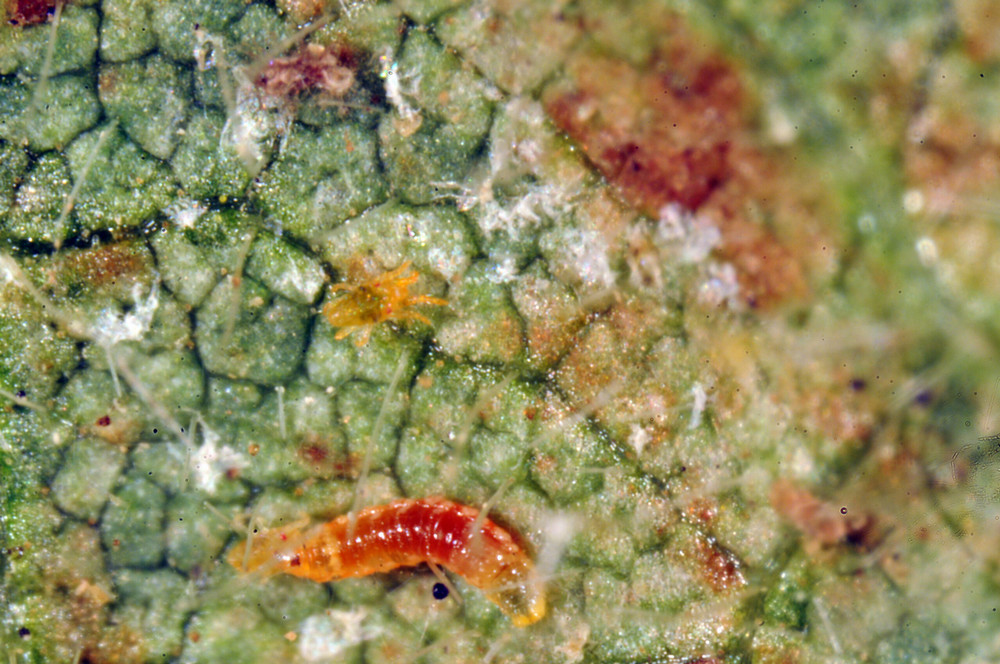
Photo by J. Obermeyer
Though rarely seen because of their size, spider mites have numerous predators and pathogens that attack them. During good crop growing conditions, unless broad-spectrum insecticides are used, many species of beneficial insects (including predaceous mites) feed on spider mites attempting to colonize plants. During periods of high humidity, fungal pathogens spread through the spider mite population keeping them in check.

